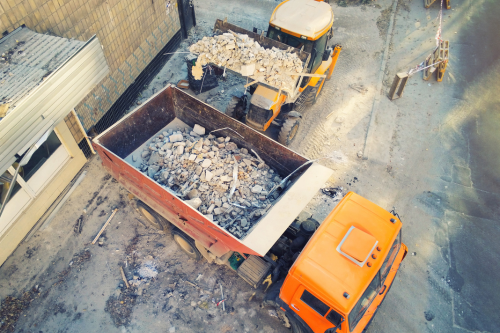Crucial steps to follow for construction waste disposal

Construction waste disposal is a critical aspect of the building process, impacting both environmental sustainability and project efficiency. Proper disposal of construction waste not only adheres to legal requirements but also contributes to a more sustainable and responsible construction industry. In this discussion, we will outline the essential steps to follow for effective construction waste disposal.
Effective Construction Waste Disposal
1. Planning and Estimating Waste: The first step in construction waste disposal is effective planning. This involves estimating the amount and type of waste that will be generated during the construction project. Accurate estimation helps in organising the necessary resources and disposal methods. It also aids in minimising waste by ordering materials more accurately.
2. Segregation of Waste: Once waste generation is estimated, the next step is segregation. Construction waste can include a variety of materials such as wood, metal, concrete, plaster, and more. Segregating waste at the source makes recycling and disposal more efficient. For instance, separating metals and wood from concrete and plaster allows for easier recycling and reduces the amount of waste sent to landfills.
3. On-site Waste Management: Managing waste on-site is crucial for efficient disposal. This includes designating specific areas for waste collection and ensuring that waste is placed in the correct containers. On-site management also involves training workers on proper waste segregation and handling practices.
4. Recycling and Reusing Materials: A significant portion of construction waste can be recycled or reused. Materials like wood, metal, and certain plastics can be sent to recycling facilities. Concrete and bricks can be crushed and reused as aggregate or fill material. Reusing and recycling not only reduce the amount of waste sent to landfills but also conserve natural resources and reduce the environmental impact of the construction project.
5. Hiring Professional Waste Disposal Services: For efficient and compliant disposal, it’s often necessary to hire professional waste disposal services. These companies are equipped to handle large volumes of waste and can provide specialised containers for different types of waste. They also ensure that waste is disposed of in compliance with local regulations and environmental standards.
6. Documentation and Compliance: Proper documentation of waste disposal is essential for regulatory compliance and can also be valuable for company records and future planning. This includes keeping track of the types and amounts of waste disposed of, as well as the methods and locations of disposal.
7. Continuous Monitoring and Improvement: Effective construction waste disposal is not a one-time task but a continuous process. Regular monitoring of waste management practices on-site can identify areas for improvement. This could involve finding more efficient ways to reduce, reuse, or recycle waste, or improving segregation and on-site management practices.
8. Educating and Training Staff: Educating and training staff on the importance of waste management and the correct disposal procedures is crucial. This ensures that all team members are aware of their roles in minimising and properly disposing of waste, leading to more effective waste management practices overall.
Speak to our team about construction waste disposal
Construction waste disposal is a multi-faceted process that requires careful planning, segregation, on-site management, recycling, professional disposal services, compliance, continuous monitoring, and staff education.
If you are looking for external support with construction waste disposal, look no further than Mantank Environmental Services. We specialise in waste management, therefore you can feel confident when working with us. To speak with our team simply fill in our contact form and we will be in touch as soon as possible.
